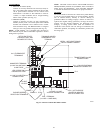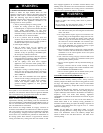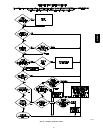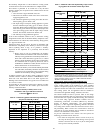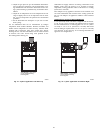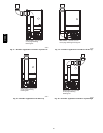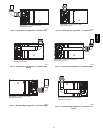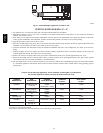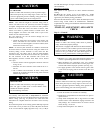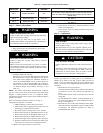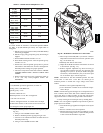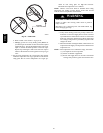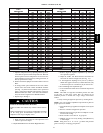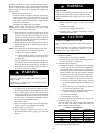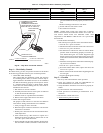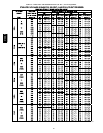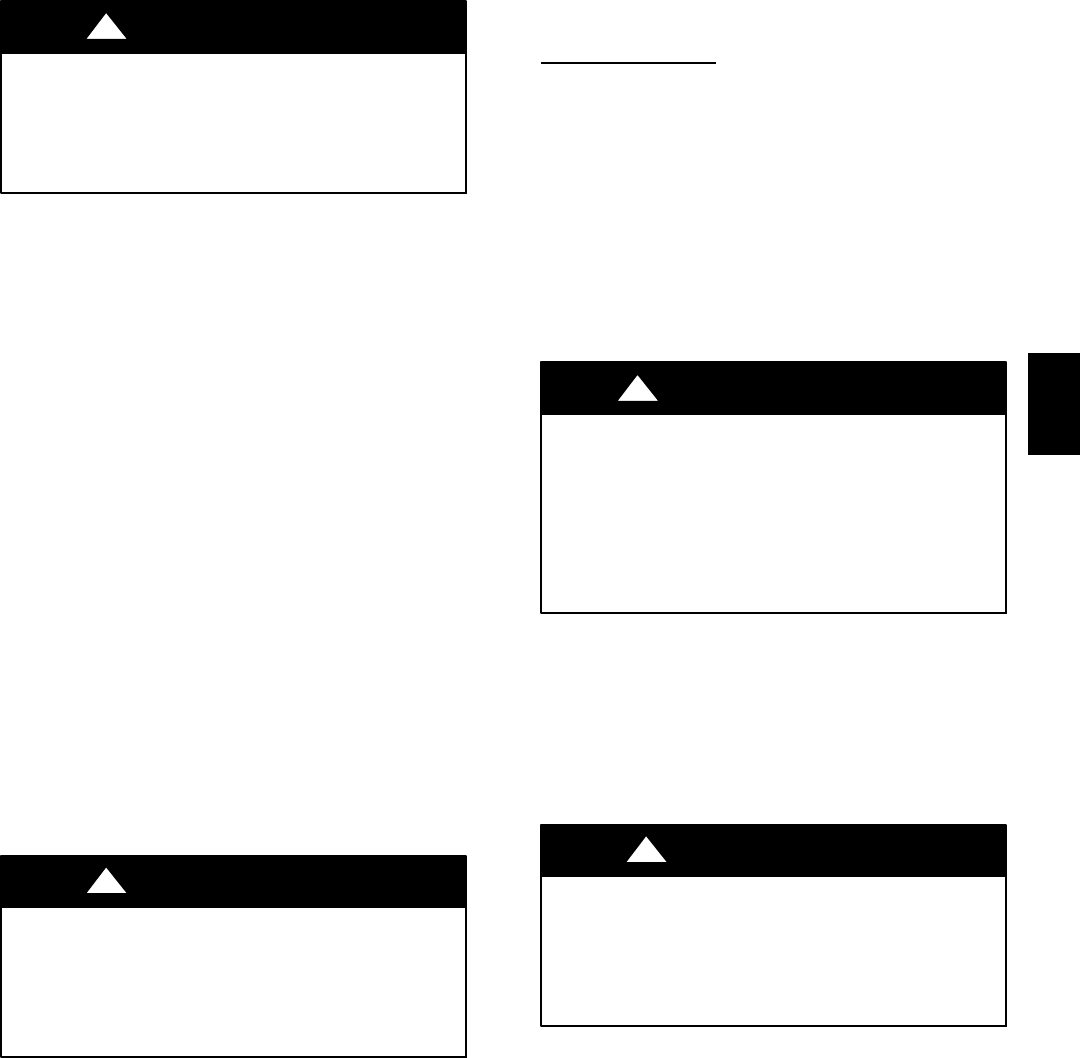
33
CUT HAZARD
Failure to follow this caution may result in personal injury.
Sheet metal parts may have sharp edges or burrs. Use care
and wear appropriate protective clothing, safety glasses and
gloves when handling parts and servicing furnaces.
CAUTION
!
NOTE: Vent connector length for connector sizing starts at
furnace vent elbow. The 4--in. (102 mm) vent elbow is shipped
for upflow configuration and may be rotated for other positions.
Remove the 3 screws that secure vent elbow to furnace, rotate
furnace vent elbow to position desired, re--install screws. The
factory--supplied vent elbow does NOT count as part of the
number of vent connector elbows.
The vent connector can exit the furnace through one of 5
locations on the casing.
1. Attach the single wall vent connector to the furnace vent
elbow, and fasten the vent connector to the vent elbow
with at least two field--supplied, corrosion--resistant, sheet
metal screws located 180_ apart.
NOTE: An accessory flue extension is available to extend from
the furnace elbow to outside the furnace casing. See Table 18 for
accessory listing. If flue extension is used, fasten the flue
extension to the vent elbow with at least two field--supplied,
corrosion--resistant, sheet metal screws located 180_ apart. Fasten
the vent connector to the flue extension with at least two
field--supplied, corrosion resistant sheet metal screws located
180_ apart.
2. Vent the furnace with the appropriate connector as shown
in Fig. 35--47.
3. Determine the correct location of the knockout to be re-
moved.
4. Use a hammer and screwdriver to strike a sharp blow
between the tie points and work the slug back and forth
until the slug breaks free.
BURN HAZARD
Failure to follow this caution may cause personal injury.
Hot vent pipe is within reach of small children when
installed in downflow position.
See the following instruction.
CAUTION
!
An accessory Vent Guard Kit, is REQUIRED for downflow
applications where the vent exits through the lower portion of the
furnace casing. (See Fig. 39.) Refer to the Vent Guard Kit
Instructions for complete details and see Table 18 for accessory
listing.
The horizontal portion of the venting system shall slope upwards
not less than 1/4--in. per linear ft. (6 mm/.3 M) from the furnace
to the vent and shall be rigidly supported every 5 ft. (1.5 M) or
less with metal hangers or straps to ensure there is no movement
after installation.
SIDEWALL VENTING
This furnace is not approved for direct sidewall horizontal
venting.
In the U.S.: Per section 12.4.3 of the NFPA 54 / ANSI
Z223.1--2009, any listed mechanical venter may be used, when
approved by the authority having jurisdiction.
Select the listed mechanical venter to match the Btuh input of the
furnace being vented. Follow all manufacturer’s installation
requirements for venting and termination included with the listed
mechanical venter.
START--UP, ADJUSTMENT, AND SAFETY
CHECK
Step 1 — General
FIRE HAZARD
Failure to follow this warning could result in personal
injury, death and/or property damage.
This furnace is equipped with manual reset limit switches in
the gas control area. The switches open and shut off power
to the gas valve if a flame roll--out or overheating condition
occurs in the gas control area. DO NOT bypass the
switches. Correct problem before resetting the switches.
!
WARNING
1. Maintain 115--v wiring and ground. Improper polarity will
result in rapid flashing LED and no furnace operation.
2. Make thermostat wire connections at the 24--v terminal
block on the furnace control. Failure to make proper con-
nections will result in improper operation. (See Fig. 33.)
3. Gas supply pressure to the furnace must be greater than
4.5--In. W.C. (0.16 psig ) but not exceed 14--In. W.C. (0.5
psig).
CUT HAZARD
Failure to follow this caution may result in personal injury.
Sheet metal parts may have sharp edges or burrs. Use care
and wear appropriate protective clothing, safety glasses and
gloves when handling parts and servicing furnaces.
CAUTION
!
4. Check all manual--reset switches for continuity.
5. Install blower compartment door. Door must be in place to
operate furnace.
6. Setup switch descriptions The 2 stage furnace has DIP
switches used to select thermostat staging and blower off
delay timings. For switch locations on Furnace control
board, See Fig. 33 and 52.
7. Setup switch descriptions -- See Table 10.
312AAV



